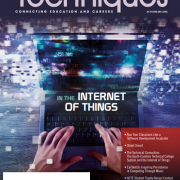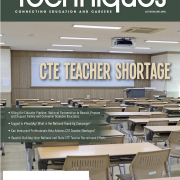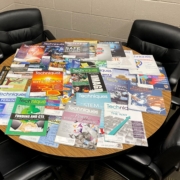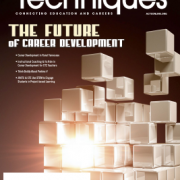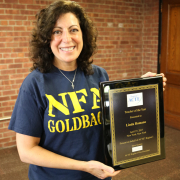Techniques Returns with A VISION of High-quality CTE
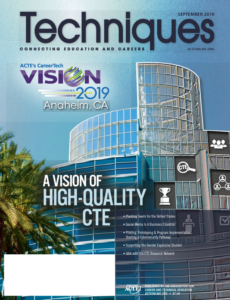 It’s here! It’s here! It’s the happiest time of the year! A new school year brings a fresh start, new pens and crisp paper — and Techniques! For 2019–2020 Techniques returns with A VISION of High-quality CTE. As the premier event for career and technical education (CTE) professionals nationwide, ACTE’s CareerTech VISION 2019 is the place to ask, “What is high-quality CTE?” In Techniques in September, discover new best practices as they relate to the 12 elements of ACTE’s Quality CTE Program of Study Framework.
It’s here! It’s here! It’s the happiest time of the year! A new school year brings a fresh start, new pens and crisp paper — and Techniques! For 2019–2020 Techniques returns with A VISION of High-quality CTE. As the premier event for career and technical education (CTE) professionals nationwide, ACTE’s CareerTech VISION 2019 is the place to ask, “What is high-quality CTE?” In Techniques in September, discover new best practices as they relate to the 12 elements of ACTE’s Quality CTE Program of Study Framework.
What is high-quality CTE?
A few years ago, ACTE embarked on an initiative to bring clarity to the conversation and to help CTE educators and administrators develop and improve the quality of their programs. Resulting from this initiative was our evidence-based framework defining high-quality CTE across 12 elements:
- Standards-aligned and Integrated Curriculum
- Sequencing and Articulation
- Student Assessment
- Prepared and Effective Program Staff
- Engaging Instruction
- Access and Equity
- Facilities, Equipment, Technology and Materials
- Business and Community Partnerships
- Student Career Development
- Career and Technical Student Organizations
- Work-based Learning
- Data and Program Improvement
For the second year in a row, educational program sessions at ACTE’s CareerTech VISION 2019 will be tagged to match these elements. Attendees can identify sessions that address issues about which they want to learn more, in order to improve their programs. And now you can get a head start. This issue of Techniques offers a sneak preview of what to expect at VISION and what the elements look like in action!
One featured article highlights cybersecurity programs and touches on a number of high-quality CTE elements. “Teaching Cybersecurity Through Virtual Labs and Hands-on Experience” (on pp. 28–33) meets criteria under Facilities, Equipment, Technology and Materials; Engaging Instruction, Student Assessment; and Business and Community Partnerships.
Another, Shannon Sheldon’s article on “Supporting the Gender Expansive Student” (on pp. 35–39), addresses the Access and Equity element of the Framework and demonstrates the ways in which traditional language, classroom procedures and social norms work against inclusion — while offering suggestions to help readers develop improvements to lessons and language.
And further, Peggy and Steven Bridges are “Class Disruptors” (on pp. 40–43), offering insight and inspiration as they encourage teachers to shake up their classroom management with the art of disruption — related to the Engaging Instruction Framework element.
These articles provide a brief glimpse into the wide range of high-quality CTE programs around the country, and we hope they provide you some insights that will help you improve the quality of your programs too!


